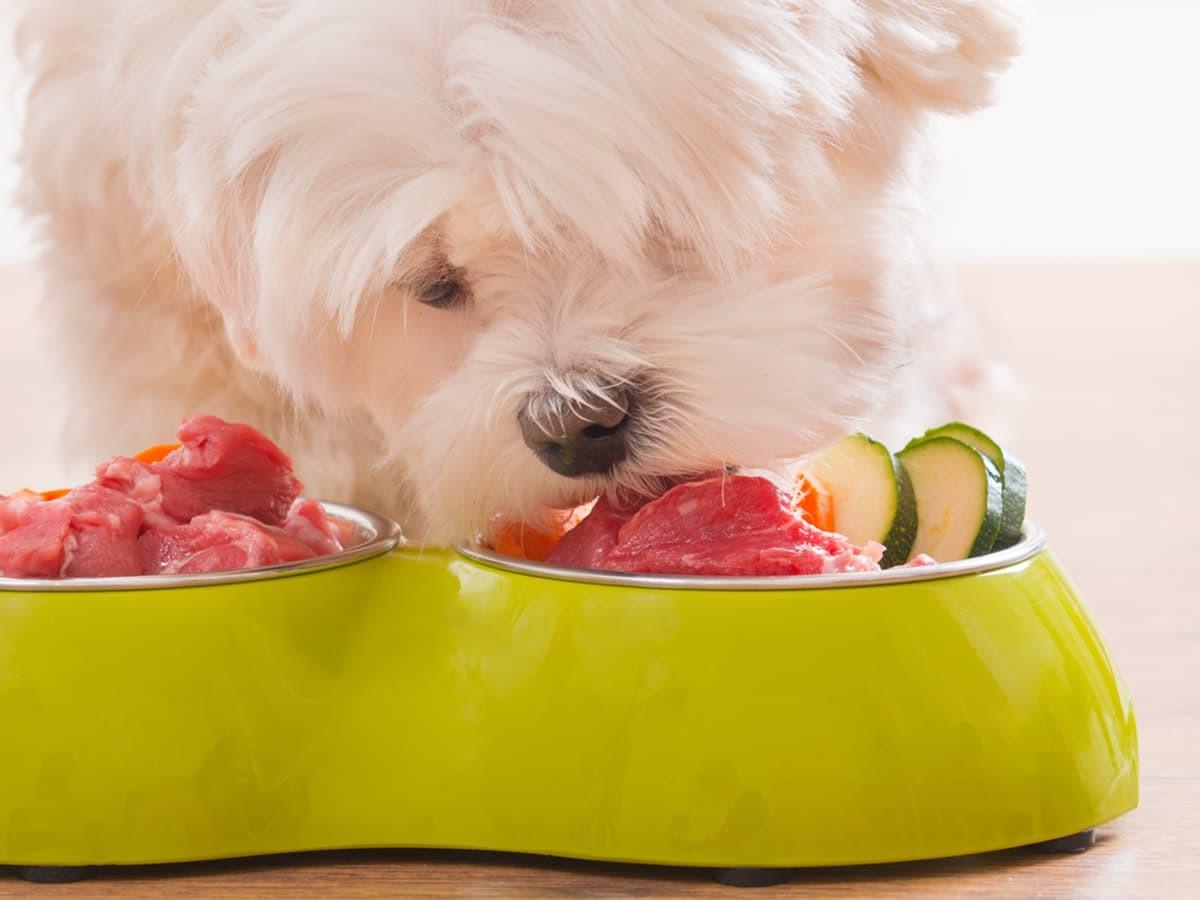Dogs are known for being omnivorous animals, which means that they can digest plant and animal-based foods. This fact has led to many people asking the question: can dogs eat beef? The answer is yes, dogs can eat beef. There are a few things you need to keep in mind before feeding your dog this type of food. In this article, we will discuss the benefits of feeding your dog beef and steak, as well as the risks associated with doing so.
Beef is a good source of protein for dogs and can be safely fed to them as long as it is cooked properly. Protein is essential for maintaining a dog’s muscle mass and helps keep their coat healthy. Beef is also a good source of omega-three fatty acids, which are beneficial for a dog’s skin and coat health. Feeding your dog beef can help increase their energy levels. This is due to the high levels of iron found in beef.
Risks associated with feeding beef to your dog
Giving your dog raw beef can increase their risk of contracting a foodborne illness. Raw meat may contain bacteria that can make your dog sick. Too much beef can lead to weight gain in dogs because beef is a high-fat food.
Feeding your dog grilled, fried, or greasy beef can cause pancreatitis. This is a serious condition that can be fatal if not treated promptly. So, can dogs eat beef? The answer is yes, but you have to watch the amount of fat and its internal temperature.
Dogs and raw beef
Can dogs eat raw beef? Yes and no. Raw beef may contain bacteria that can make your dog sick. Feeding your dog raw beef can increase their risk of contracting a foodborne illness. However, raw beef is a good source of protein for dogs and can be safely fed to them as long as it is handled properly.
Protein is essential for maintaining a dog’s muscle mass and helps keep their coat healthy. Beef is also a good source of omega-three fatty acids, which are beneficial for a dog’s skin and coat health. Feeding your dog beef can help increase their energy levels. This is due to the high levels of iron found in beef. Kibble does not offer the same benefits as beef and is not as easily digestible for dogs.
Although beef is a good source of protein for dogs, it cannot be used as a meal replacement. This is because beef does not contain all of the essential nutrients that a dog needs to survive. A complete and balanced diet for dogs must include proteins, fats, carbohydrates, vitamins, and minerals.
Best cuts of beef for dogs
The best cuts of beef for dogs are the leaner ones, such as chuck steak or round steak. These cuts have less fat and are easier for dogs to digest. Avoid feeding your dog fatty cuts of beef, such as ribeye or T-bone steak, as these can cause gastrointestinal issues.
How much beef can I feed my dog?
The amount of beef you can feed your dog depends on their weight and activity level. For example, a ten-pound dog can have one ounce of beef per day. A 50-pound dog can have up to five ounces of beef per day. Always consult with a veterinarian before making any changes to your dog’s diet.
Dogs and steak Can dogs eat steak? Although some vets may recommend against feeding your dog steak, others believe that it can be a healthy part of their diet. It is important to consult with your vet before making any changes to your dog’s diet. They will be able to give you the best advice for your pet based on their individual needs.
Extras for your dog’s beef
Add extras to your dog’s beef meal to make it more nutritious. For example, you can add vegetables or fruits to their food. You can also add supplements, such as omega-three fatty acids, to their diet.
Dogs can eat steak, beef, and raw beef. In fact, they are omnivores that can digest a variety of different foods. This means that you don’t have to stick to one specific brand or type of dog food. As long as it is high-quality and provides all the nutrients your dog needs, they will be able to thrive on it. Mix things up a bit and throw them a bone (beef, of course!) and the occasional steak or beef heart – just make sure it’s properly cooked first!
What Your Dog Can Eat As Well
There’s no shame in wanting to give our dogs whatever food will make them happy. There just happens to be many other choices out there that are much healthier and more nutritious than pretzels. Here is a list of all the junk foods that your dog can eat.
Fruits
There are many fruits that dogs can eat which are packed with vitamins, dietary fibers, and antioxidants. The best are berries like strawberries, blueberries, cranberries, and raspberries. Dogs can eat bananas, oranges, apples, melons, mangos, and pineapples. Make sure fruits with pits, stems, cores, and seeds have been ridden from these items. Several of them are choking hazards and peach pits can be toxic. Grapes of any kind are poisonous to dogs, and even raisins shouldn’t be given to them.
Seafood
When seafood is free from shells, tails, bones, and legs, they are safe for a dog to eat. Dogs can have lobster, shrimp, salmon, crab, tuna, flounder, and a variety of other fish that is lower in mercury. Fish with too much mercury fed too often to our dogs can cause mercury poisoning. Uncooked or undercooked seafood can contain harmful pathogens and bacterium like salmonella which can make a dog extremely ill. Always ensure that seafood is thoroughly cooked before feeding it to your dog.
Beans
Beans can be great sources of dietary fibers and proteins which are necessary for a dog’s health. Dogs can have a wide variety of beans, including lima beans, pinto beans, black beans, garbanzo beans, soybeans, butter beans, kidney beans, navy beans, and even green beans. Beans should always be cooked thoroughly and fed to dogs in moderation to avoid tummy aches. Beans shouldn’t replace meat in a dog’s diet, since the meat they eat is a richer source of proteins.
Vegetables
As stated earlier, garlic and onions contain toxins that are bad for dogs, and even seasonings containing traces of these vegetables could cause problems. Avocado is another poisonous food because it contains a toxic chemical called persin. Other veggies are considered great sources of fiber and vitamins for dogs. Dogs can eat carrots, pumpkins, spinach, celery, brussels sprouts, broccoli, kale, and many other vegetables instead.
Nuts
Most nuts aren’t toxic to dogs, save for walnuts and macadamia nuts. Other nuts aren’t necessarily poisonous, but they can contain lots of salts, fats, and proteins that are difficult to digest. They also aren’t very practical because they can be choking hazards due to their shapes, sizes, and shells. Cashews, almonds, and pistachios are fine for dogs to eat moderately, especially when they are made into butter which is safer to eat in terms of obstruction.

I’m Charlie: canine enthusiast with a knack for figuring out why my dog, Dallas, is more infatuated with tennis balls than me. My lifelong passion for dogs has created a dedication to help other pet parents better understands their furry family members!
*Jan 2019 to April 2024 administrator claims data.
1.) Elliott, B, Can my dog eat this? A list of human foods dogs can and can’t eat. Healthline, 2023, February 1, https://www.healthline.com/nutrition/human-foods-for-dogs
2.)Can dogs eat raw meat?: Purina. Purina US., n.d, https://www.purina.com/articles/dog/feeding/can-dogs-eat/raw-meat
The information presented in this article is for educational and informational purposes only and does not constitute or substitute for the advice of your veterinarian.












